I have found myself in charge of a fish pond at the new house and in going into fish, pond and plant shops I came across miniature versions of the classic red phone box:

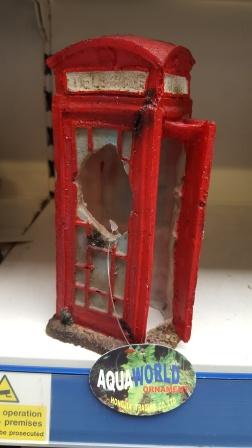
I have found myself in charge of a fish pond at the new house and in going into fish, pond and plant shops I came across miniature versions of the classic red phone box:


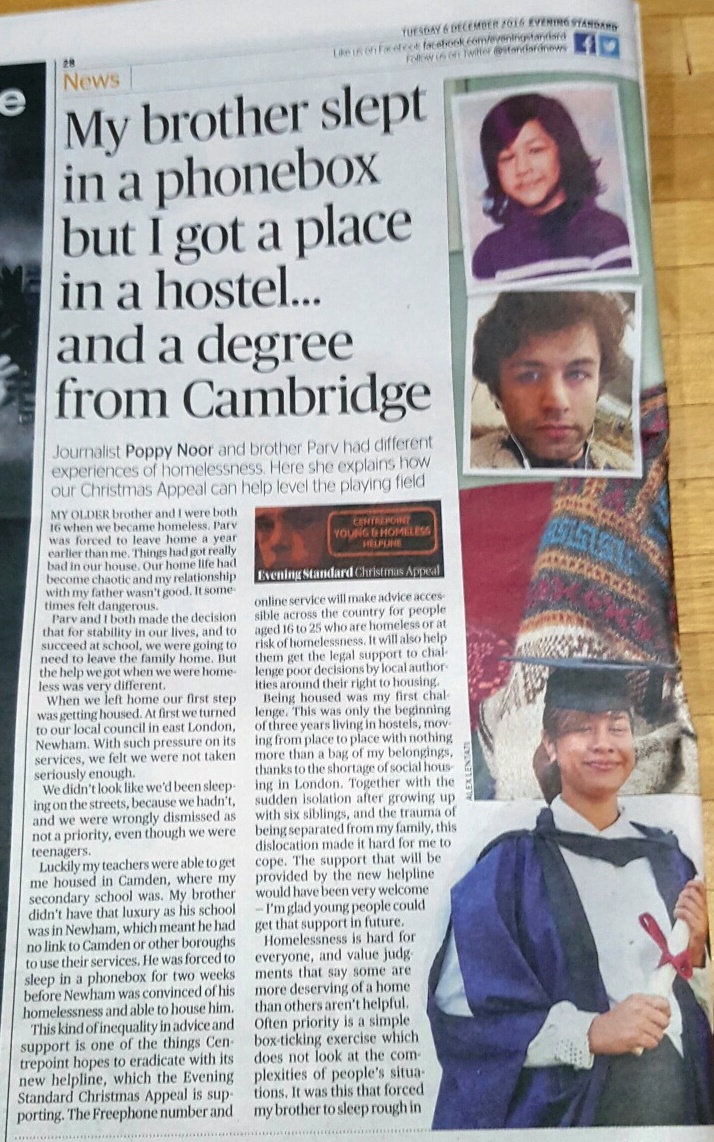
Evening Standard: 6 December 2016
And another story about closures… My thought – if it costs £310 a year to maintain the box then can the three groups quoted in this article all throw in £100 a year to sponsor the phone-box? BT can pay any remainder costs and everyone should be happy. Anyway, the story:
This appeared in the ‘i’ newspaper yesterday (11 October 2016). Sign of the times:

Which leads nicely onto this:
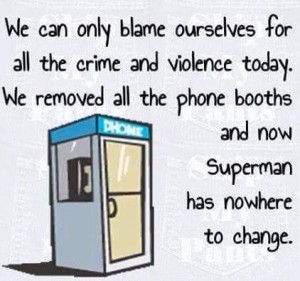
Banksy likes a phone box – and so, it seems, does someone else…
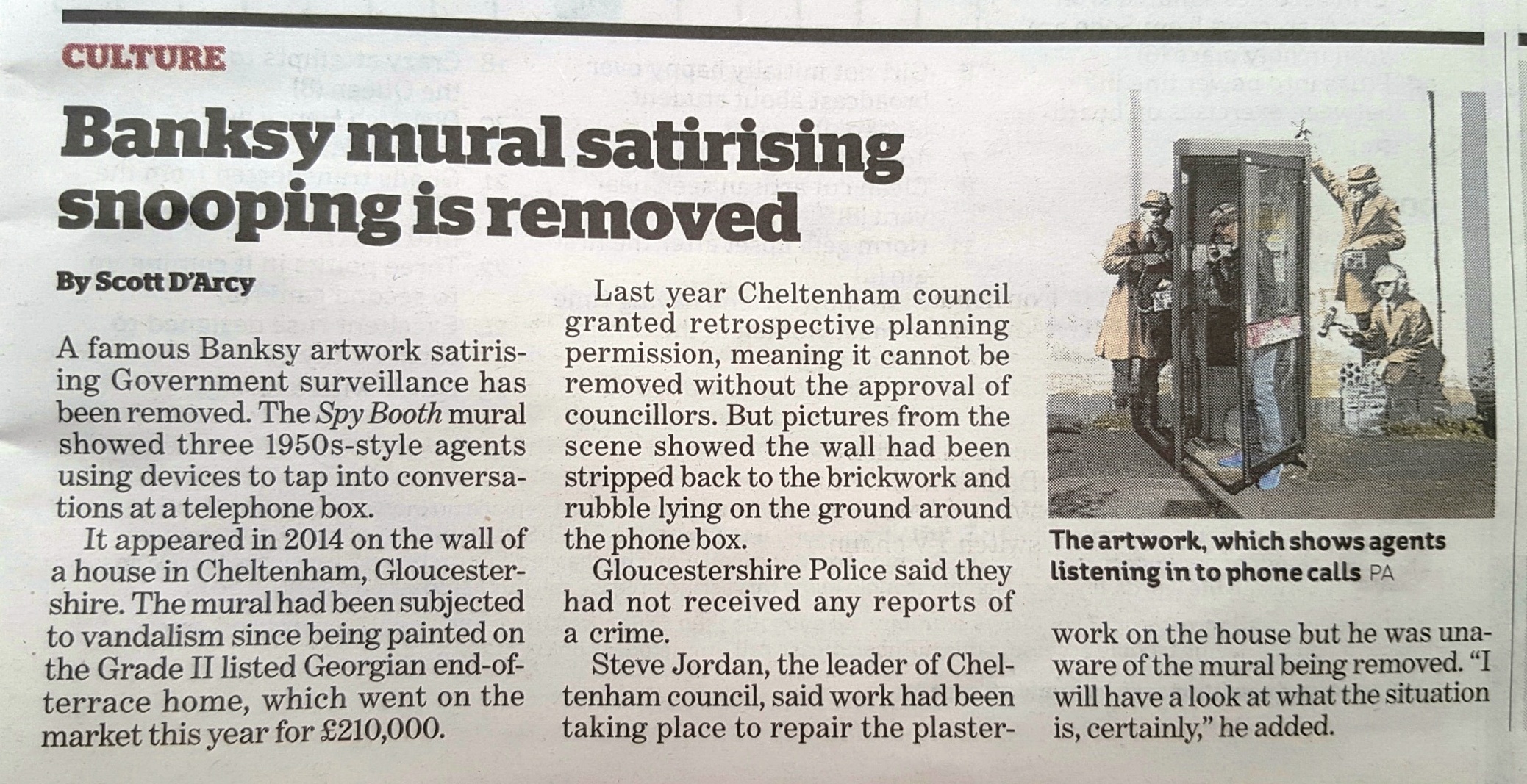
Source: ‘i’ newspaper, 23/8/2016
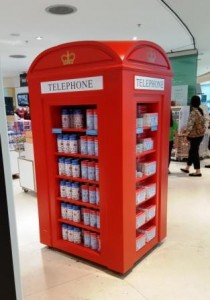
British Museum July 2016
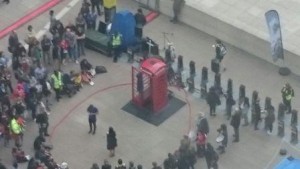
A bit of street art and entertainment, as seen from above, utilising the phone box (July 2016, Canary Wharf, London).

Kiran outside the phone box in Forest Gate, where she was found. Credit: SWNS
A woman abandoned in a phone box as a baby has been reunited with the man who found her. Kiran Sheikh was just two hours old when her mother dumped her in the middle of the night on April 30, 1994.
Her rescuer Joe Campbell said at first he thought the baby – who he named April – was an empty chip wrapper as he approached the phone box. He told Good Morning Britain:
“When I saw it was a little baby I called 999 and the police came and the ambulance came and that’s when I found out she was just about two hours old.”
Joe said he felt an “instant connection” with the baby and even asked if he could adopt her, but was told it wasn’t possible as he wasn’t married at the time.
“I asked if I could keep in contact, I was told no, that’s not possible. I asked if I could find out how she was doing, and I was told no, that’s not possible.”
In the end Joe had to cut all contact with Kiran but said he never gave up hope of finding her one day. Kiran went searching for him after discovering who he was in her adoption file.
“He had done so much for me. It said in my file he gave me presents, he sent me cards and I never received anything, but he did. I needed to thank him somehow,” she said. And it wasn’t long before they were reunited.
Joe said: “It was one of the happiest days of my life because I never stopped looking for her. I was always hopeful that someday, somehow I would find her before I finally part this world.”
After the emotional reunion, the pair said it was like finding a family member.
“She is my family. I told her you’ve got siblings. Ok, we’re not blood related but it’s like we are,” Joe said.
For the full story with images – go to the ITV News website.
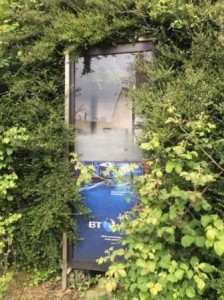
Covered in thick foliage and buried deep into the hedgerow, this phone box in St Michaels felt like “something from I’m A Celebrity”.
Councillor Sue Ferguson, who posted the picture on social media, said closing the door of the dark, dingy kiosk felt like a challenge from the ITV show.
Councillor Sue Ferguson, who posted the picture on social media, said closing the door of the dark, dingy kiosk felt like a challenge from the ITV show.
She said:
“If you were slightly scared of insects you really wouldn’t want to be in there. It was quite horrible to go inside. It felt like one of those awful things from I’m A Celebrity – it would be one their terrible tasks to actually shut the door!”
In the popular reality show, contestants perform tricky or terrifying tasks – bushtucker trials – to win food and treats for their camp and most of the challenges involve creepy crawlies.
The kiosk next to the Fat Ox pub still works but as most people have a mobile phone now, it is rarely used.
Their production of telephone boxes ended altogether in 1985 with the advent of the KX series phones and many kiosk around the country have been broken and abandoned.
Mrs Ferguson added:
“I tweeted pictures of it to BT showing what a state it was in and they actually replied to say they would get this sorted, so well done BT for wanting to do something about it.”
Fools: BT to scrape half UK phone boxes
Not only will phone box numbers be reduced, today’s news tell us that Big Ben (in the background) will cease to chime for 4 years while undergoing repairs.
I woke to some sad news today – BT are phasing out UK phone boxes. Well it had to happen. I was in Poland recently and saw no phone boxes and wondered if this was going to happen elsewhere.
BT makes the suggestion that phone boxes can be adopted – well for £1 I’ll do that. I’m going to email them now for the details…
See below for the details from the press –
Cross post from the BBC:
BT to scrap half of the UK’s remaining telephone boxes
BT is to scrap half of the UK’s remaining 40,000 telephone boxes and focus on the ones in locations where people are more likely to use them. In 1992 at their peak before mobile phones became popular, there were 92,000 phone boxes in the UK. Telephone boxes still handle 33,000 calls a day, but one third of kiosks are never used to make a call. BT said many phone boxes had become a burden and were expensive to repair and maintain.
BT intends to scrap the 20,000 telephone boxes over the next five years. Out of the 40,000 phone booths still working, 7,000 are the traditional red phone boxes designed in 1935 to commemorate the silver jubilee of King George V.
More than half of phone boxes lose money and the number of calls is declining by more than 20% per year. The cost of maintaining telephone boxes annually is about £6m. BT is responsible for repairing damage to the kiosks, including replacing glass panes and broken receivers, as well as removing graffiti, rubbish and human waste.
It is estimated that 93% of all people in the UK now own a mobile phone, and 98% of the UK has 3G or 4G mobile internet coverage. However, phone booths are still used by children, the elderly, people who can’t afford mobile phones, and in emergencies when smartphone batteries go flat.
If there are two kiosks within 400m walking distance of a site, BT is allowed to remove one, as long as there is one left. But if the telecoms provider seeks to remove the only phone booth on the site, Ofcom rules state BT must inform the public and consult with the local authorities. The authority then has 90 days to object, which is known as a “local veto”.
In areas where telephone boxes are not being used, many local communities have transformed and preserved phone booths by buying them for £1 from BT under the Adopt a Kiosk scheme. So far, more than 4,000 kiosks have been repurposed as mini-libraries and art galleries or to house defibrillation machines, information centres, shops and exhibitions.
——————————————————-
Cross-post from The Guardian:
BT to scrap half of UK’s remaining phone boxes after usage falls 90%
A much-loved but almost obsolete feature is set to vanish from thousands of British streets when BT presses button B to cancel calls in 20,000 phone boxes – a reference that would have to be explained to an entire digital generation which has never made a call from a public phone.
Faced with soaring maintenance costs and plummeting usage, BT plans to scrap half of the UK’s remaining public telephone boxes, many of which are now never used for their original purpose.
The phone boxes were once lifelines to the wider world at a time when many homes had no landline and the very idea of a mobile phone came from the wilder shores of science fiction. Today many are the sad and smelly last resting places of pigeons and half-eaten chicken takeaways, or worse.
Some 33,000 calls a day are still made from phone boxes, but about a third are only used once a month, and many are never used at all. Of those in more regular use, few earn enough money to cover maintenance costs.
The number of calls has been dropping by 20% a year, while the cost of cleaning, replacing broken glass panels, repairing vandalised receivers and removing graffiti and rubbish has risen steadily to about £6m a year.
“BT is committed to providing a public payphone service, but with usage declining by over 90% in the last decade, we continue to review and remove payphones which are no longer used,” a spokeswoman said.
The boxes would only be removed according to Ofcom guidelines, she said. If there is no other payphone within 400 metres, the local authority must be notified, and the box would only be removed if there were no objections.
Many of those that will survive the cull are traditional red cast iron boxes, 2,400 of which are Grade II listed buildings. The most famous design, cherished by collectors when they are decommissioned, is the K6 kiosk, created in 1935 by Sir Giles Gilbert Scott and inspired, bizarrely, by a tomb in Old St Pancras churchyard created by the Georgian architect Sir John Soane in 1816 to mark his wife’s grave.
At their peak there were 92,000 payphones across the UK, and queues in the street were a familiar sight at the busiest ones, where those impatient for their turn rapped indignantly on the glass to rebuke chatty callers.
BT is encouraging communities to reprieve some of those now condemned by paying £1 to adopt them so that they might join the 4,300 that have found new lives as tiny libraries, art centres, sites for lifesaving defibrillation equipment and, as in a particularly thrilling Archers plot line, local information points.
The cost of using a public phone box was measured out in old copper pennies for decades. T0day the minimum charge is 60p, which includes a 40p connection charge, and would be enough to pay for many calls and texts from most mobile phones.
Comments Off on Fools: BT to scrape half UK phone boxes
Posted in Comment, Media, News
Tagged UK